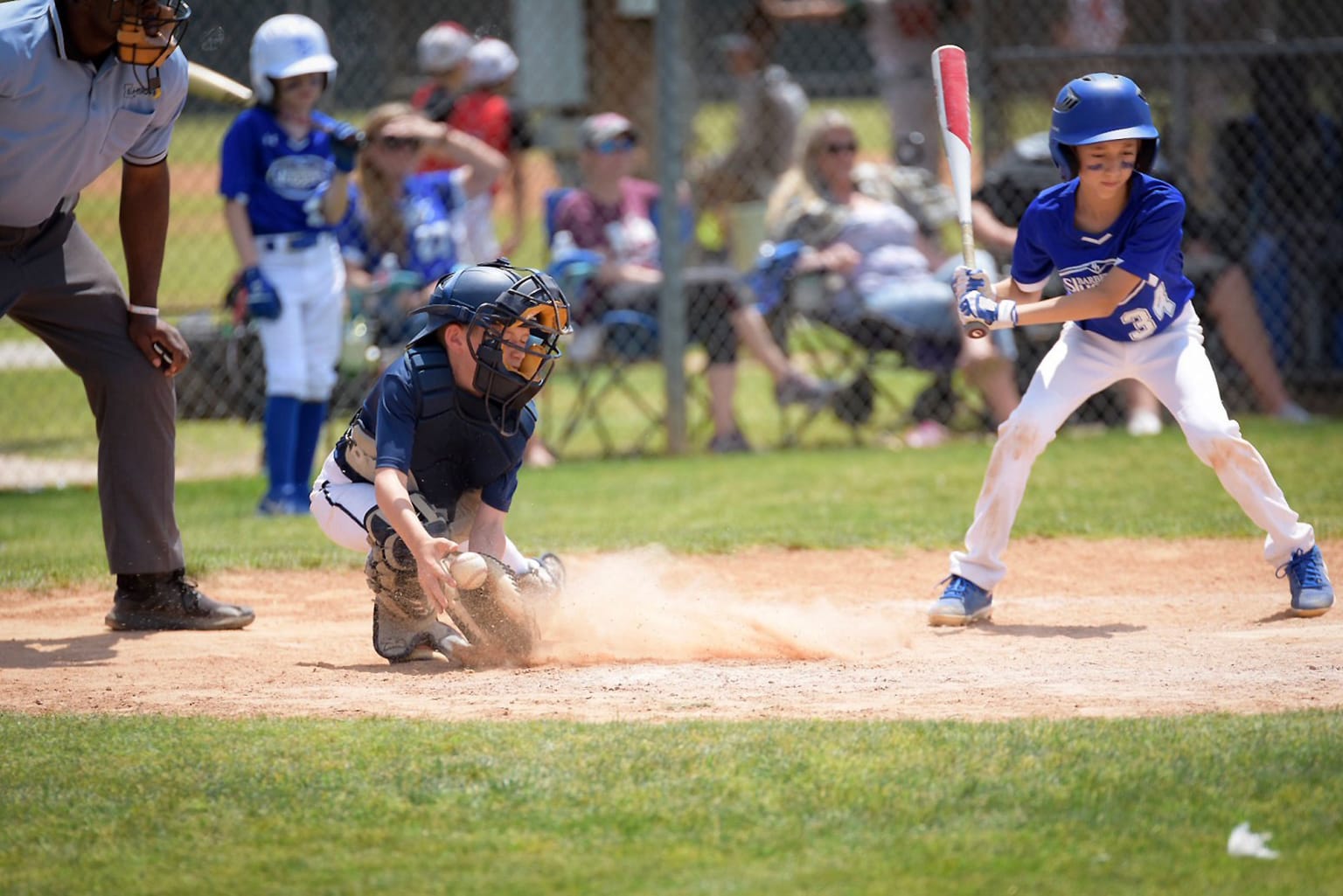
We will explain and define a pitched ball and how it affects an at-bat if hit-by-pitch is ruled by the umpire. The situations described below is applicable in all divisions of Little League Baseball® and Little League Softball®.
Situation
In the bottom of the third inning, with runners on second and third and one out, the visiting manager decides to make a pitching change. After eight warm-up pitches and the umpire putting the ball back in play, the first pitch thrown by the new pitcher bounces in front of home plate. As the batter tries to avoid the pitch, the ball caroms off the batter’s shin and goes to the backstop, prompting the umpire to call “dead ball.” As the catcher chases the ball, both runners score. The umpire immediately awards the batter first base on hit-by-pitch. As the batter assumes first base, the umpire tells the manager to return the base runners to the bases each occupied prior to the pitch. With the ball not yet put back into play, the Manager of the offensive team calls for and is awarded “time” and approaches the umpire and asks for an explanation.
Explanation
By Little League® definition, a pitch is a ball delivered to the batter by the pitcher. How the ball reaches the batter is not a point of contention, as long as the pitcher is in contact with the pitcher’s plate and delivers the ball directly toward the batter. If the batter is hit by the pitch in any fashion while attempting to avoid it, he is awarded first base. Since the result of a batter being hit by a pitched ball is a dead ball, no subsequent play(s) may occur. Therefore, the base runners in this situation must be returned to the base last occupied prior to the pitch being thrown, and the runs scored do not count.